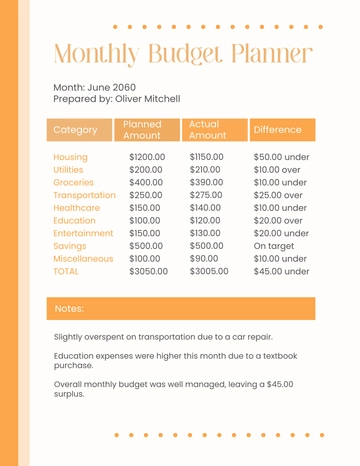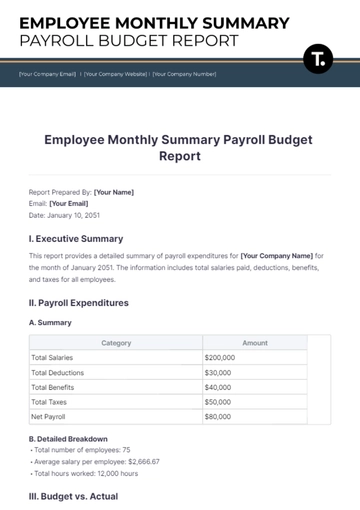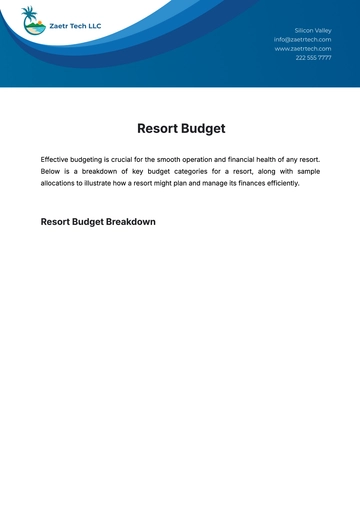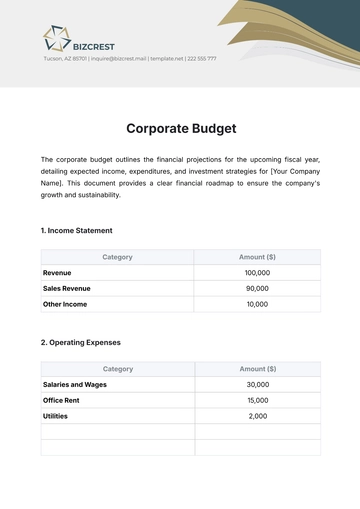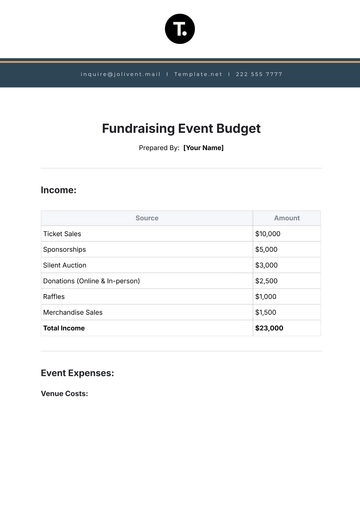Free Account Budget Crisis Management Protocol
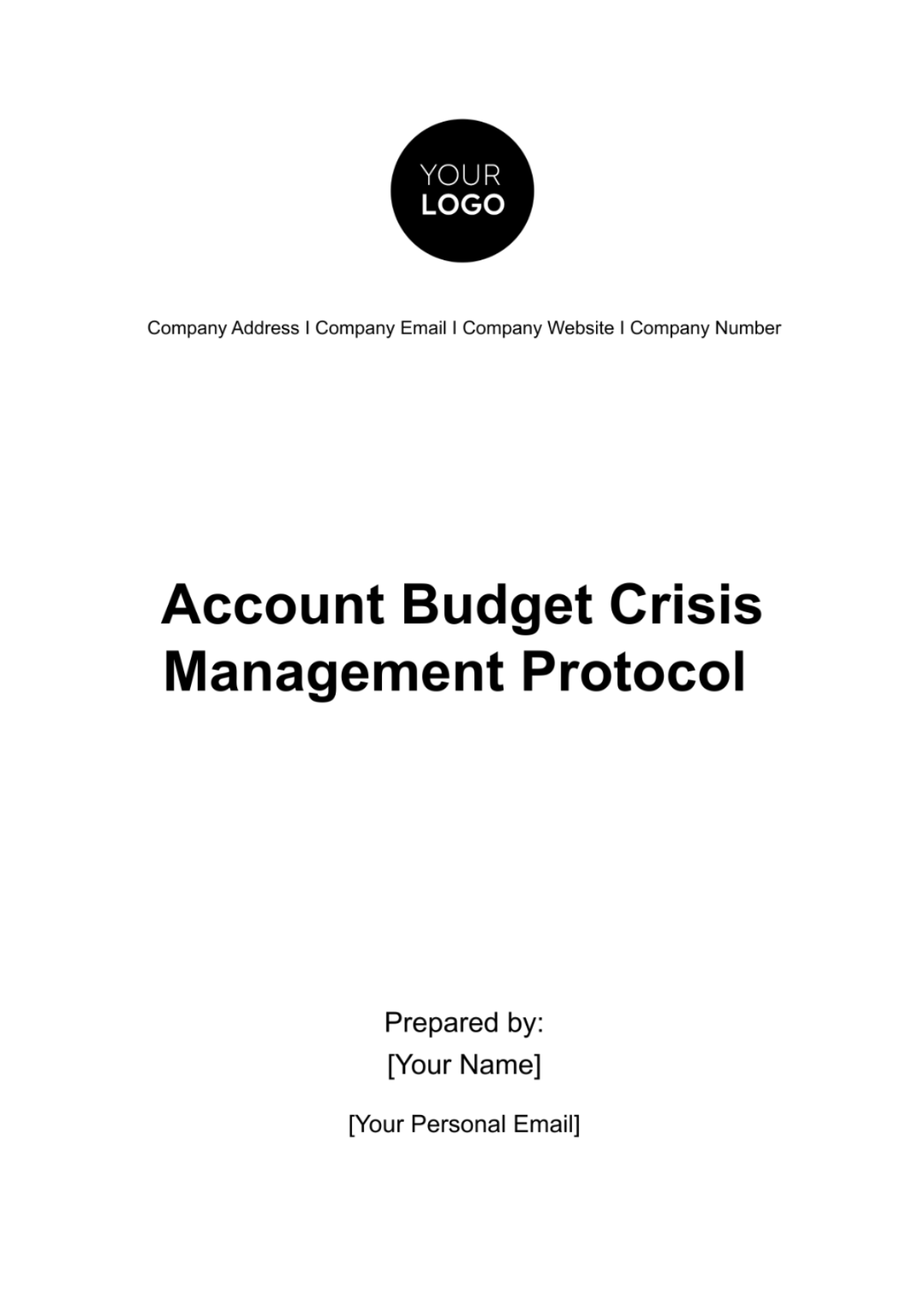
Purpose
The objective of our Account Budget Crisis Management Protocol is to establish a clear, effective framework for responding to financial emergencies that threaten our organization's stability and operational capacity. This protocol is designed to guide our immediate actions and decision-making processes, ensuring a swift, coordinated response to mitigate the impacts of budget crises and safeguard our financial health.
Scope
This protocol covers a range of budget crises, including significant unplanned expenditures, sudden decreases in revenue streams, liquidity issues, and any external economic factors that critically impact our budget. It is applicable to scenarios where our projected or actual financial performance deviates from the planned budget by more than 10%, requiring immediate corrective actions to avert or manage a financial emergency.
Identification of a Budget Crisis
A budget crisis is recognized when our financial monitoring systems indicate a deviation from the planned budget that cannot be adjusted within the normal course of financial management. This includes situations where expenditures significantly exceed the budget, revenues fall short of expectations by a substantial margin, or when liquidity positions jeopardize ongoing operations. The formal recognition of a budget crisis is triggered when these deviations meet or exceed a threshold of 10% of the overall budget, or when liquidity falls below a critical level necessary to sustain operational commitments for a 60-day period. The early warning signs are as follows:
Significant Revenue Shortfalls: A decrease in revenue by more than 15% compared to the projected figures for two consecutive months.
Unexpected High Expenditures: Exceeding budgeted expenditures by 20% in any given month, especially in non-discretionary areas.
Cash Flow Issues: Operating cash flow turns negative for more than one month, indicating liquidity problems.
Economic Downturns: Economic indicators suggest a downturn that could affect our revenue streams, such as a significant drop in industry demand or consumer spending.
Supplier or Partner Financial Issues: Financial instability in key suppliers or partners that could lead to increased costs or disruption in operations.
Regulatory or Legal Challenges: New regulations or legal judgments that impose unexpected significant financial burdens.
Market Changes: Sudden changes in the market that adversely affect our investment portfolio or revenue projections, including interest rate spikes or stock market crashes.
These early warning signs are monitored continuously to ensure prompt identification and response to potential budget crises.
Crisis Management Team
The Crisis Management Team is comprised of senior members from various departments, each bringing expertise critical to navigating financial emergencies. This team is tasked with assessing the situation, making informed decisions, and leading the implementation of our crisis response strategy.
Role | Member | Responsibilities |
Team Leader | CFO | Overall strategy, decision-making, and coordination |
Financial Analysis Lead | Head of Finance | Financial impact analysis, budget adjustments |
Operations Lead | COO | Operational adjustments, cost control measures |
HR Lead | Head of HR | Staffing implications, communication to staff |
IT Lead | CTO | Support for remote work, IT cost adjustments |
Communications Lead | Head of Communications | Internal and external communication strategy |
Legal Counsel | Legal Advisor | Legal implications, regulatory compliance |
Activation Process
The Crisis Management Team is activated under the following conditions:
When financial indicators meet or exceed the crisis recognition criteria.
Upon identification of early warning signs that suggest an impending financial emergency.
At the discretion of the CFO or CEO, when unforeseen circumstances pose an immediate threat to our financial stability.
Upon activation, the Team Leader convenes an emergency meeting within 24 hours to assess the situation and initiate the crisis management protocol.
Communication Plan
Internal Communication
During a crisis, maintaining clear, transparent, and timely communication within the organization is paramount. We will use a multi-channel approach, including email updates, emergency meetings (virtual or in-person), and a dedicated section on our intranet for ongoing updates. The Communications Lead is responsible for ensuring that all employees are informed about the situation, the steps being taken to address it, and their roles in the crisis response. Regular updates will be scheduled, and a feedback mechanism will be established to address concerns and suggestions from staff.
External Communication
Communicating with external stakeholders is equally important to manage perceptions and maintain trust. The Communications Lead will coordinate messages to investors, partners, customers, and the public, as appropriate. This will include initial notifications of the crisis, regular updates on the response measures, and any impact on services or operations. Communication channels will include press releases, emails, social media updates, and, if necessary, press conferences. The messaging will be consistent, factual, and aim to reassure stakeholders of our commitment to resolving the crisis and minimizing its impact.
Financial Assessment and Impact Analysis
Initial Assessment
Upon activation of the Crisis Management Team, an immediate financial assessment is crucial to understand the extent of the crisis and plan our response effectively. This assessment involves:
Reviewing current cash flow projections to identify immediate liquidity risks.
Analyzing recent financial statements to pinpoint areas of concern related to revenues, expenditures, and unexpected liabilities.
Assessing the impact on operations that may affect financial performance, including any disruptions to supply chains or changes in demand.
Evaluating investment portfolios for potential losses or liquidity options.
Consulting with department heads to gather insights on any unforeseen expenses or potential savings.
Ongoing Monitoring
Continuous monitoring of our financial health throughout the crisis ensures that we can adapt our strategies as necessary. Our guidelines for ongoing monitoring include:
Daily cash flow tracking to ensure liquidity is maintained for critical operations.
Weekly financial performance reviews to compare against forecasts and adjust projections.
Regular meetings with department heads to discuss financial performance and operational adjustments.
Monitoring external economic indicators that could further impact our financial position.
Engaging with financial advisors for insights on market conditions and financial strategies.
Crisis Response Strategies
Cost Reduction Measures
Identifying and implementing cost reduction measures is a priority to mitigate the financial impact of the crisis. Potential areas for immediate cost savings are outlined below:
Area | Description | Estimated Savings ($) |
Non-essential Expenditures | Pause on all non-critical spending | 50,000 |
Operational Efficiencies | Streamline operations, reduce waste | 75,000 |
Workforce Adjustments | Hiring freeze, voluntary unpaid leave | 100,000 |
Vendor Negotiations | Renegotiate contracts for better terms | 30,000 |
Utility Savings | Implement energy-saving measures | 10,000 |
Revenue Enhancement Strategies
Simultaneously, exploring opportunities for quick revenue generation can help offset financial shortfalls. Our approach includes:
Strategy | Description | Estimated Revenue |
Promotional Campaigns | Short-term promotions to boost sales | 60,000 |
New Revenue Streams | Identify and launch new products/services | 80,000 |
Asset Liquidation | Sale of non-essential assets | 50,000 |
Online Services | Expand offerings in digital platforms | 40,000 |
Customer Financing Options | Offer financing to encourage larger purchases | 30,000 |
Financial Support and Resources
Accessing external financial support can provide additional liquidity during a crisis. We will explore the following sources:
Source | Description | Potential Amount ($) |
Government Aid Programs | Apply for available relief funds and loans | 200,000 |
Line of Credit | Utilize or increase existing credit facilities | 150,000 |
Investor Contributions | Seek additional funding from investors | 300,000 |
Strategic Partnerships | Form partnerships for mutual financial benefit | 100,000 |
Grants | Apply for grants relevant to our operations | 50,000 |
Action Plan Development
Developing specific action plans is critical to executing our crisis response strategies effectively. The process for developing these action plans involves:
Identifying Priorities: Based on the financial assessment and impact analysis, prioritize areas requiring immediate action to stabilize our financial position.
Assigning Responsibilities: Designate team leads for each priority area, ensuring clear accountability for action plan development and execution.
Setting Objectives: For each action plan, define specific, measurable objectives that align with our overall crisis management goals.
Allocating Resources: Determine the resources required for each plan, including budget, personnel, and technology, and ensure their availability.
Establishing Timelines: Create realistic timelines for the completion of each action plan, with milestones to monitor progress.
Risk Mitigation: Identify potential risks associated with each action plan and develop mitigation strategies to address them.
Approval Process: Submit action plans to the Crisis Management Team for review and approval, ensuring they meet strategic and financial criteria.
Implementation and Monitoring: Once approved, implement the action plans, continuously monitoring progress and adjusting as necessary based on evolving conditions.
Legal and Regulatory Considerations
Legal and regulatory issues are paramount during a financial crisis, as non-compliance can exacerbate the situation. It is essential to consider the following legal and regulatory issues:
Issue | Description | Consideration / Action Required |
Employment Laws | Adherence to labor laws in case of workforce adjustments. | Review workforce plans with legal counsel to ensure compliance. |
Contractual Obligations | Obligations to clients, suppliers, and partners under contracts. | Assess contracts for force majeure clauses and renegotiation opportunities. |
Financial Reporting | Compliance with financial reporting standards and deadlines. | Ensure accurate and timely reporting, considering any crisis-related disclosures. |
Loan Agreements | Terms of existing loan agreements and potential covenants breaches. | Communicate with lenders to negotiate terms or waivers if necessary. |
Tax Compliance | Meeting tax obligations and taking advantage of any relief measures. | Stay informed on tax relief measures and ensure timely compliance. |
Regulatory Filings | Required filings with regulatory bodies that may be impacted. | Identify any changes in filing requirements or deadlines due to the crisis. |
Data Protection | Ensuring data protection laws are adhered to during the crisis. | Maintain data security and privacy standards, especially in remote work arrangements. |
Recovery Planning
As we navigate through the crisis, it is critical to plan for recovery to ensure the organization can return to its pre-crisis financial health and operational capacity. Recovery planning involves assessing the damage, prioritizing recovery efforts, and setting milestones for success. Here are the steps for financial recovery:
Conduct a thorough review of our financial status post-crisis, including cash flow, revenue streams, and expenditures.
Update financial projections based on the current economic environment and the organization's new operational realities.
Implement strategies to return operations to full capacity, focusing on core business areas that drive revenue.
Develop a plan to rebuild financial reserves depleted during the crisis.
Assess and adjust the investment portfolio to align with the post-crisis financial strategy and risk tolerance.
Regularly review financial and operational progress against recovery milestones and adjust strategies as needed.
Post-Crisis Review
Conducting a post-crisis review is essential to understanding the effectiveness of the crisis response and identifying areas for improvement. Here is the process for reviewing.
Compile all relevant data related to the crisis management efforts.
Assess the crisis response actions taken.
Highlight what worked well and what did not.
Propose modifications to the crisis management plan based on findings.
Incorporate lessons into future training and revise protocols accordingly.
Share the results of the review with key stakeholders and implement the recommended changes.
Documentation Requirements
Maintaining comprehensive documentation is crucial for effective crisis management and post-crisis analysis.
Documentation to be Maintained | Before Crisis | During Crisis | After Crisis |
Crisis Management Plan | ✓ | ✓ | ✓ |
Financial Reports | ✓ | ✓ | ✓ |
Communication Records | ✓ | ✓ | |
Action Plan Documents | ✓ | ✓ | |
Legal and Regulatory Compliance | ✓ | ✓ | ✓ |
Meeting Minutes | ✓ | ✓ | |
Post-Crisis Review Findings | ✓ |
Access and Confidentiality
Ensuring that sensitive information related to crisis management is accessible to authorized personnel while maintaining confidentiality is paramount.
Document | Who Has Access |
Crisis Management Plan | Crisis Management Team, Senior Management |
Financial Reports | Finance Department, Senior Management, Crisis Management Team |
Communication Records | Communications Lead, Crisis Management Team |
Action Plan Documents | Relevant Department Heads, Crisis Management Team |
Legal and Regulatory Compliance | Legal Advisor, Senior Management |
Meeting Minutes | Participants, Senior Management |
Post-Crisis Review Findings | Senior Management, Department Heads |
Training and Drills
To ensure our organization is well-prepared to implement the Account Budget Crisis Management Protocol effectively, comprehensive training and regular drills are essential. These activities are designed to familiarize the crisis management team and relevant staff with their roles and responsibilities during a crisis, as well as to test the effectiveness of the crisis management plan in a controlled environment.
Training Program | Duration | Audience |
Crisis Management Team Orientation | 2 days | Crisis Management Team |
Financial Crisis Response Training | 1 day | Finance Department, Senior Management |
Operational Continuity Planning | 1 day | Operations Department, IT Department |
Legal and Regulatory Compliance | Half-day | Legal Team, Compliance Officers |
Communication Strategies in Crisis | Half-day | Communications Team, Senior Management |
Full-Scale Crisis Simulation Drill | 1 day | All Employees |
Review and Update Procedure
The dynamic nature of financial crises necessitates regular reviews and updates to the Account Budget Crisis Management Protocol to ensure its effectiveness and relevance. This process allows us to incorporate lessons learned from drills, actual crises, and changes in the organizational structure or external environment.
Annual Review: Schedule an annual review of the crisis management protocol to assess its comprehensiveness and effectiveness.
After Action Reports: Following any crisis event or drill, compile an after-action report detailing what was successful and areas for improvement.
Incorporate Feedback: Solicit feedback from all participants in the crisis response, including external partners where applicable, to identify any gaps or weaknesses in the plan.
Update Training Programs: Revise training programs and drill scenarios based on the outcomes of the reviews and the latest best practices in crisis management.
Approval of Updates: Any changes to the protocol or training programs should be reviewed and approved by senior management to ensure alignment with organizational goals and strategies.
Communicate Changes: Clearly communicate any updates to the crisis management plan and training programs to all relevant parties, ensuring that everyone is informed of their roles and responsibilities.
Document Control: Maintain a version control log for the crisis management protocol to track changes over time and ensure that the most current version is easily accessible.
- 100% Customizable, free editor
- Access 1 Million+ Templates, photo’s & graphics
- Download or share as a template
- Click and replace photos, graphics, text, backgrounds
- Resize, crop, AI write & more
- Access advanced editor
Navigate financial turbulence with the Account Budget Crisis Management Protocol Template from Template.net. This editable and customizable tool is crafted to provide a solid framework for handling budget crises effectively. With its capability to be editable in our AI Editor tool, it ensures that you're prepared to manage and mitigate financial emergencies swiftly. Template.net offers this template to empower your team with a robust crisis management strategy, enhancing resilience and financial stability.
You may also like
- Budget Sheet
- Personal Budget
- Non Profit Budget
- Monthly Budget
- Project Budget
- HR Budget
- Company Budget
- Home Budget
- Weekly Budget
- College Budget
- Business Budget
- Construction Budget
- Small Business Budget
- Hotel Budget
- Annual Budget
- Home Renovation Budget
- Household Budget
- Student Budget
- Grocery Budget
- Marketing Budget
- Corporate Budget
- Startup Budget
- Manufacturing Budget
- Church Budget
- University Budget
- Annual Budget Plan
- Event Budget
- Operating Budget
- Travel Budget
- Food Budget
- IT and Software Budget
- School Budget
- Real Estate Budget
- Sales Budget
- Conference Budget
- Budget Finance
- Freelancer Budget
- Budget Advertising
